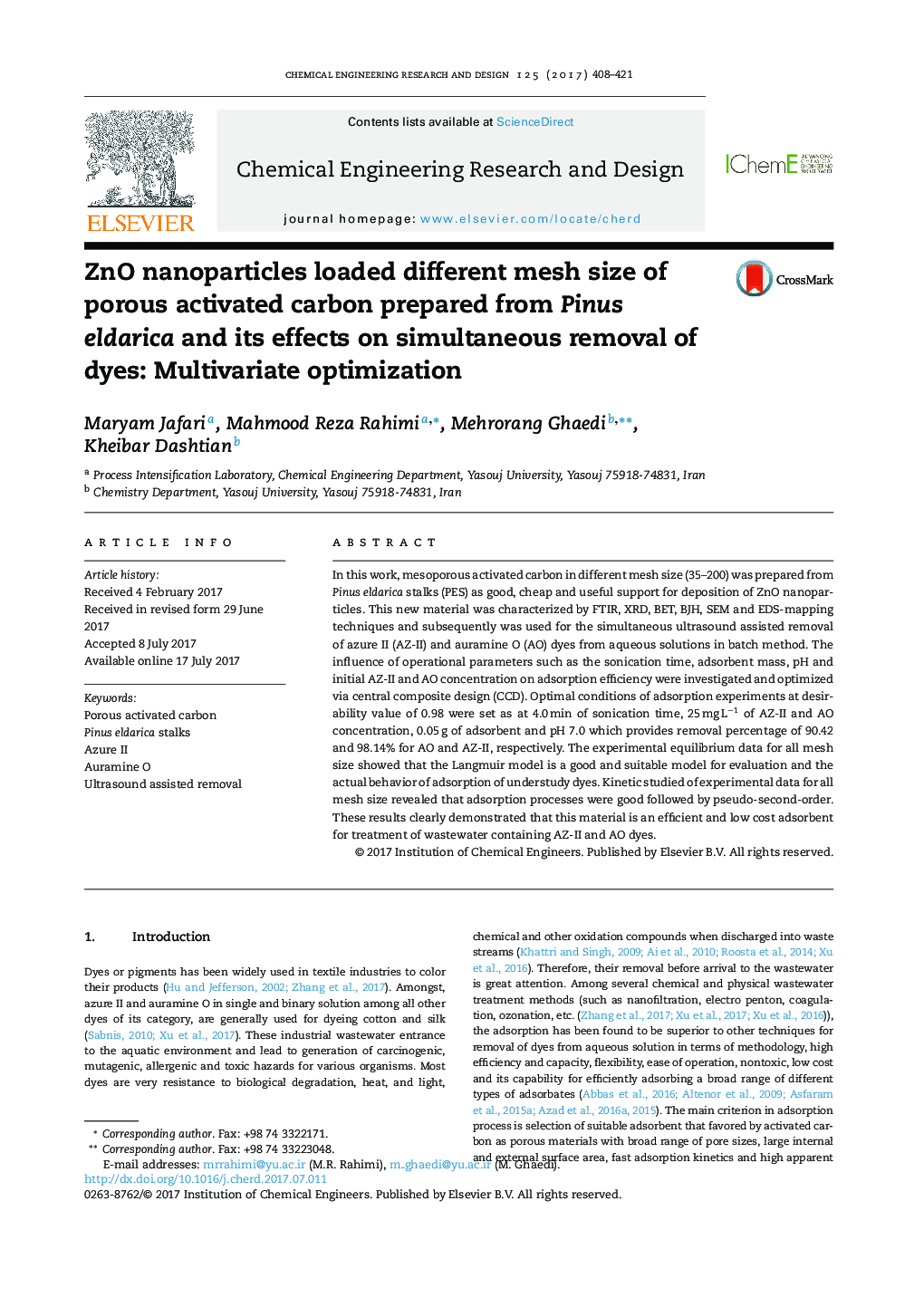| Article ID | Journal | Published Year | Pages | File Type |
|---|---|---|---|---|
| 4987104 | Chemical Engineering Research and Design | 2017 | 14 Pages |
Abstract
In this work, mesoporous activated carbon in different mesh size (35-200) was prepared from Pinus eldarica stalks (PES) as good, cheap and useful support for deposition of ZnO nanoparticles. This new material was characterized by FTIR, XRD, BET, BJH, SEM and EDS-mapping techniques and subsequently was used for the simultaneous ultrasound assisted removal of azure II (AZ-II) and auramine O (AO) dyes from aqueous solutions in batch method. The influence of operational parameters such as the sonication time, adsorbent mass, pH and initial AZ-II and AO concentration on adsorption efficiency were investigated and optimized via central composite design (CCD). Optimal conditions of adsorption experiments at desirability value of 0.98 were set as at 4.0 min of sonication time, 25 mg Lâ1 of AZ-II and AO concentration, 0.05 g of adsorbent and pH 7.0 which provides removal percentage of 90.42 and 98.14% for AO and AZ-II, respectively. The experimental equilibrium data for all mesh size showed that the Langmuir model is a good and suitable model for evaluation and the actual behavior of adsorption of understudy dyes. Kinetic studied of experimental data for all mesh size revealed that adsorption processes were good followed by pseudo-second-order. These results clearly demonstrated that this material is an efficient and low cost adsorbent for treatment of wastewater containing AZ-II and AO dyes.
Keywords
Related Topics
Physical Sciences and Engineering
Chemical Engineering
Filtration and Separation
Authors
Maryam Jafari, Mahmood Reza Rahimi, Mehrorang Ghaedi, Kheibar Dashtian,
